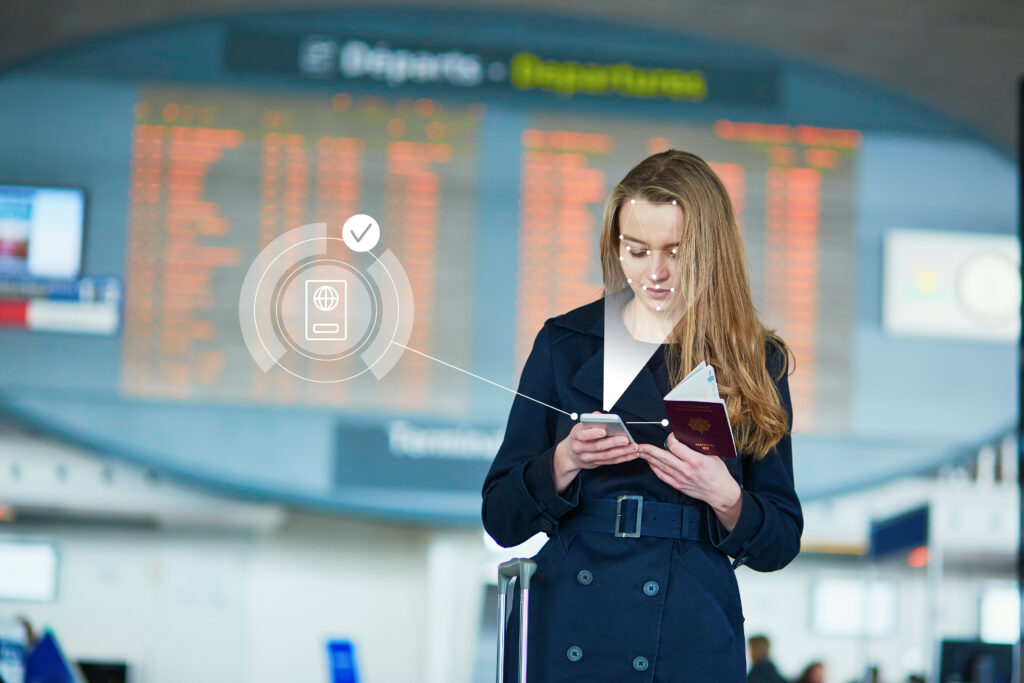Airports can improve the speed and convenience of passenger journeys by implementing the latest biometric technology, according to global technology provider Thales
Even before the pandemic struck, biometric-enabled passenger journeys were an increasingly attractive option for airports. Around the world, most airports faced the challenge of managing a relentless rise in traveler numbers within existing terminal buildings. As well as compromising the customer experience, queues and bottlenecks at passenger touchpoints have significant cost and commercial implications. If customers spend less time at each checkpoint, this will reduce the need for additional equipment and staff for the airport as well as the turnaround time of airplanes for the airlines. In addition, passengers spend more time at terminal shops and restaurants, which increases the attractiveness of the airport for both passengers and retailers.
Against this backdrop, optimizing the time taken to process travelers became a priority. Deployment of biometric and document verification technologies at every touchpoint in the terminal – mobile and airport check-in, bag drop, security gates and final boarding – can facilitate stress-free, self-service authentication by passengers themselves. Crucially, travelers no longer have to carry physical credentials, tickets and boarding cards. Once enrolled, a passenger’s face is all they need to confirm both their identity and right to travel. As a result, the speed of the boarding process, for example, can be improved by up to 30%. For airports, this resource optimization creates opportunities to simultaneously boost customer satisfaction, retail revenues and operating efficiency.
Health and safety
While Covid-19 has temporarily interrupted the growth in passengers, it has further strengthened the case for pathways based on biometrics and self-service document verification. Virtually overnight, airports were obliged to introduce social distancing. Queues and bottlenecks are no longer simply an annoyance for customers, or a barrier to improved financial performance. They are a public health issue.
Touchless biometric journeys represent a ready-made solution. By minimizing face-to-face interactions with staff and streamlining passenger throughput, the new wave of biometric recognition and document verification systems reduce the risk of virus transmission, boosting passenger confidence to return to air travel.
Challenges of implementation
The potential benefits are clear. However, successful deployment of biometric journeys involves significant challenges. On the plus side, the core technologies of biometric recognition and automated document verification are now mature. Exacting standards of accuracy can be assured, even if passengers are wearing face masks. Facial recognition ‘on the move’ offers the fastest and most fluid approach, but for cultures where veils are worn, it can be supplemented with iris-based identification.
Whichever techniques are employed, data privacy is absolutely key and will require passengers’ explicit consent to use their biometric data for verifying their identity along their airport journey, as well as the destruction of any biometric information immediately after take-off.
Another challenge is to succeed in growing the use of the mobile device as an alternative channel for passenger enrolment and checking as it has the potential to reduce integration costs associated with airport legacy equipment and platform – as well as achieving a digital travel credential accepted by all.
In terms of implementation, the critical issue lies not in the various technologies involved, but the ability to integrate them effectively. To achieve this, turnkey suppliers must combine experience, expertise and the extensive resources necessary to successfully deploy solutions at scale. With major airports typically managing tens of millions of passengers every year, operators simply cannot afford to get the migration process wrong.
Opportunities
Right across Asia, the Middle East, North America and Europe, momentum behind new passenger pathways continues to grow. For airports, the interest encompasses both full and partial biometric journeys. Airlines are also investing, focusing on the boarding and bag-drop touchpoints. A number of large-scale projects are already underway, with more in the pipeline. Notable examples include the Fly to Gate solution successfully tested by Thales in several airports in the USA and Europe.
Few industries have been impacted as severely by the pandemic as air travel. However, one of the few positives to emerge from this difficult period will be a step change in adoption of faster and more convenient passenger journeys. If airports and airlines adopt the right supplier partnerships, the entire spectrum of air travel stakeholders can look forward to a revolution in the passenger experience, and all the commercial and operational benefits that will go with it.
- This article was originally published in the April 2022 issue of Passenger Terminal World magazine

